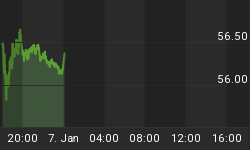The success of the multi-year machinations of the U.S. Government and the Federal Reserve's attempts to manage the fiscal crisis can best be summarized in a single word - and that word is ephemeral - yes, ephemeral! This beautifully succinct word, ephemeral, is defined as "lasting for only a short period of time and leaving no permanent trace." Yes, indeed, what better word is there to describe the Government's so-called rescue plan than ephemeral - here today and gone tomorrow - and without a trace of lasting benefit!
While I tend to be short on words and to the point, as my previous articles* will attest, trying to achieve both accuracy and brevity on this subject was difficult to achieve but what follows should provide a reasonably fair and complete assessment.
Myriad of Statistical Measurements are Being Manipulated and Massaged
There have been a myriad of statistics presented by analysts attempting to quantify the short- and long-term impact of the economic and fiscal policies deployed over the last couple of years. Gauges, such as the contribution to GDP expansion in relation to government spend, earnings growth of publically traded companies, the status of bank balance sheets, etc., have all been factored into some sort of scorecard for the state of the economy. In the segregated and insulated world of government policy makers, Fed officials, well-connected bankers and other sundry insiders, these manipulated and massaged statistical measurements have been designed to serve as the basis for public pronouncements as to how we are to see the world around us. Unfortunately, due to a dearth of inquisitive and competent financial journalists, the alliance of powers at the global economic helm have been free to make erroneous and unchallenged declarations such as the sighting of "green shoots", or an "officially declared" emergence from recession, or "officially documented" resumption of sustained economic growth. In the real and tangible world, however, the statistics don't support reality.
The Blind Begin to See
Many of the economists who relied upon deceptive government-generated economic statistics to tout a questionable recovery are now becoming increasingly pessimistic as a consequence of mounting evidence of collapsing consumer confidence, punk retail sales, and a fierce resumption of housing's descent. They are adjusting their forecasts down and some are even suggesting that normal economic activity will not resume until 2015 or beyond. What remains to be seen, however, is if a nation that is so massively indebted, top to bottom, will be recognizable after such a prolonged period in the tank.
America's Socio-Economic Transition is in its Final Stage
What has emerged from the financial crisis, and the officially sanctioned choosing of winners and losers, is a clear picture of the evolving two-tier global social order. Now that those beneficiaries of official favor have succeeded in off-loading their losing wagers onto the general public, there is no longer any urgency on behalf of Washington or the Fed to alleviate the suffering of those unfairly saddled with the burden of payment. What will be implemented are schemes that require further surrender of individual liberty and the extinguishing of any prospect for building personal wealth in exchange for worthless promises of government supplied sustenance and protection. In place by 2015 will not be renewed economic growth in the traditional sense, but an economy that has devolved into a confluence of the worst elements typically associated with socialist Europe and Central/South American banana republics.
Preservation of Wealth Today is a Prudent Course of Action
Simplistic investment axioms passed off as wealth management, such as "buy and hold equities" and "real estate never goes down" (see chart below), have failed miserably for the past decade. Preservation of wealth until the storm passes, in lieu of squandering hard earned dollars chasing yesterday's investment themes, appears to be the more prudent course of action. In the not too distant future, once the unmitigated misallocation of capital is reckoned with and artificially supported sectors of the economy are vanquished, t here will be great opportunities to be realized. The key to survival through this long dark period is proper positioning of one's capital now, surveying matters with a strategic mindset, and great patience.

Gold and Silver - The Ultimate Refuge
Although derided as useless by those with a vested interest in preserving the privileges accorded those who steal wealth and gain power via a fiat monetary system, gold and silver have historically served as a refuge when such a counterfeit system is threatened with degradation or collapse. Our mirage of a money system is facing a challenge to its viability right now. Should the Feds irredeemable paper scraps experience further loss of purchasing power, or global repudiation, gold and silver holdings will come through such a debacle intact and still be in possession of intrinsic value tradable for goods and services globally.
Conclusion
The model portfolio has always included a measured position in gold and silver (to learn precisely how much please visit http://www.munknee.com/2010/07/how-much-bullion-would-equity-investors-need-to-hold-to-insure-against-inflation/ ) and such an allocation should be regarded as a long term store of wealth and not as a position for short or intermediate trade.
Given that we are hurtling headlong into what the Chinese would call "interesting times," it makes sense to grab hold of something that has been here before and has consistently come out intact - physical gold and silver.
*Following are hyperlinks to two of my previous articles on the economy and the merits of owning gold which I urge you to read:
a) http://www.safehaven.com/article/17328/gold-price-sizzles-as-the-us-economy-fizzles and
b) http://www.safehaven.com/article/17038/if-1-1-still-equals-2-then-gold-will-explode















